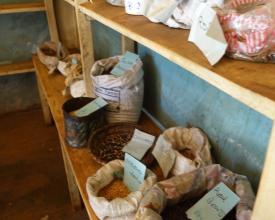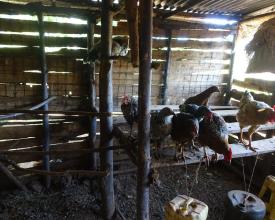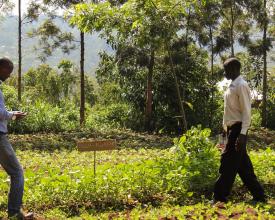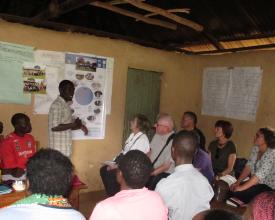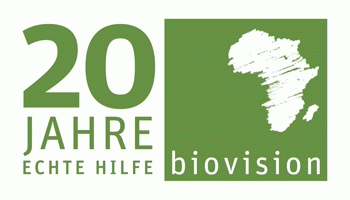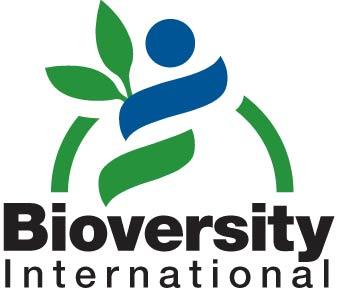
Integrated participatory approach to improving dietary diversity
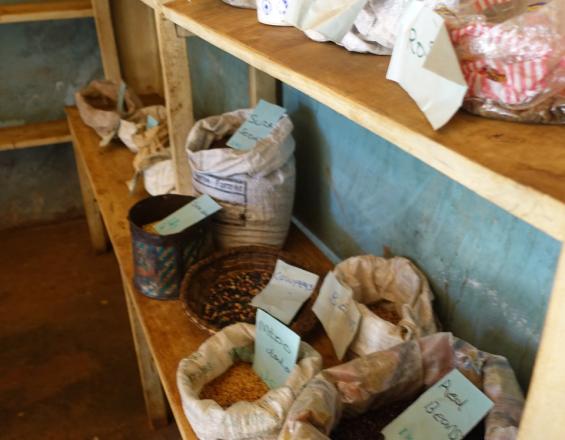
The participatory approach seeks to work with the community to come up with locally available, affordable and sustainable ways to tackle food, nutrition and livelihood security. We encourage the use of local agrobiodiversity to enhance the nutrition status, especially of women of reproductive age and children aged 6-23 months. The communities are actively involved in the choice and implemetation of suitable interventions thus the solutions are community-specific.
The approach has been successfully implemented in Vihiga County, Kenya. We would like to scale it to Turkana County in Kenya and the Tigray area in Ethiopia.
Context
Challenges addressed
Malnutrition, food insecurity and poverty undermine human potential and stagnate economic growth. The complex burden of multiple forms of malnutrition is closely linked to diet quality.
There is growing consensus that sustainable use of locally available agrobiodiversity (ABD) - domesticated, wild and in markets - can supply these nutrient-rich food groups, which can be used in combination to improve dietary diversity.
The use of locally available resources results in economic saving.
Nutrition education on dietary diversity leads to improved nutrition and health, thus reducing hospital visits.
Improved agricultural knowledge and skills can lead to surplus production which can provide income for the participating households.
Location
Process
Summary of the process
An amicable relationship between all partners from inception to evaluation is important for smooth implimentation of a solution.
Results of the problem diagnosis inform the most ideal action plan as agreed upon by the main beneficiaries and other partners.
Communities and local partners are involved in data collection and monitoring, and invited to reflect on study results. The active involvement of all stakeholders qualifies the method as Participatory Action Research.
Building Blocks
Collecting Agirnutrition and Konwledge, Attitude and Practice Data
Reliable and recent data about the study community is a key contributor to the success of an intervention.
Data provides prior knowledge of the community and possible areas of collaboration with other exisiting projects, if any exist.
In our Vihiga project, results of the baseline survey informed us of the current situation (exisiting nutritional gaps). The results were also shared with the communities and it is from these findings that the communties based their deliberations and came up with possible ways of tackling the problems found.
For scaling up of the project in Turkana and Ethiopia, we will utilize agrinutrition data collected earlier in both areas.
Data collection in the mid and end will help determine the effectiveness or otherwise of the intervention
Enabling factors
- Selection of a representative sample
- Accuracy in data collection, entry and analysis
- Simplified dissemination of research findings to enable uderstanding by the community hence relevant intervention.
Lesson learned
- It is important to carry out a diagnostic study before any intervention plans in order to establish exisiting gaps
- Our use of mixed methods in data collection helped in data verification
- It is important to invest in the whole research process-data collection, cleaning and analysis for accurate representative results.
Designing Community Action Plans
Community led initiatives have a higher chance of success. Working with the community for the community is one of the best ways of ensuring process and results ownership.
In our reference case of Vihiga County, after desseminating results of the baseline survey to the intevention community, with the guidance of all participating partners the locals were allowed to brainstorm and come up with possible feasible interventions.
This largely contributed to the success of the project as the participants enthusiastically made effort to ensure successful implementation and continuity. Some members voluntered their land and other resources towards the project, it beng their very own.
Partners offered some financial support to kick start the project, and also agri nutrition knowledge and skills.
Enabling factors
Inclusivity
Collaboration
Community active participation
Lesson learned
For an intervention to work best, let it be community owned and actioned from inception, with the guidance of other participating partners like the government and donors.
Partnerships and collaboration around nutritional security
Working together with other stakeholders for synergy helps in ensuring success.
Pooling human, technical and financial resources helps in achieving more for less time and money, and also helps curb replication of solutions.
All partners and the community are actively involved in the entire process thus each party takes ownership resulting to success.
Enabling factors
- Cordial relations among all stakeholders
- Timely communication and coordiantion to enable participation
- Resource allocation by each participating partner to ensure smooth operations hence no gaps/delays in service delivery
Lesson learned
Stakeholder collaboration is essential for successful problem diagnosis, identification, planning and implemetation of any interventions in the community
Impacts
A before and after assessment of key nutrition status and knowledge, attitude and practises indicators was conducted. Feedback from the endline survey revealed the following;
- Improved knowledge levels among caregivers in the intervention communities
- Improved agricultural knowledge and skills of local farmers in the intervention communities
- Improved nutrition and health status due to consumption of diverse diets
- Improved livelihoods through sell of surplus from own production
- Household dietary diversity resulting from nutrition education provided through the project
- Involvement of men in food production for household consumption and sell
- Women have been empowered to actively participate in agricultural production
Beneficiaries
- Women of reproductive age 18-49 years and their households
- Children 6-23 months
- Local farmers
- County ministries of health and agriculture
- Partnering research institutions and NGOs
Sustainable Development Goals
Story
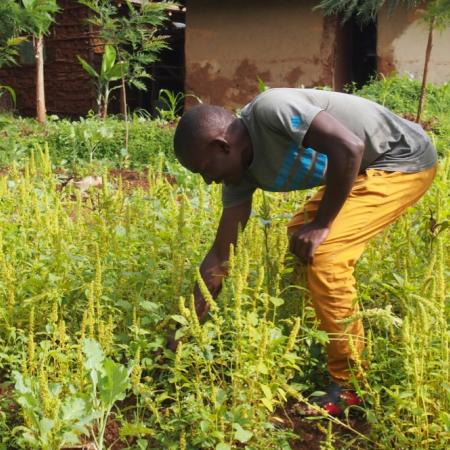
According to one beneficiary farmer Eunice Kimiya, she was wasting a lot of money buying vegetables from the market. As a result of the project trainings and facilitation she feeds her family from her own farm production. Eunice further alludes that in the past she only cooked a limited variety of vegetables, which she bought: “Previously, I spent too much time and money at the market buying vegetables. I no longer have to do this as I can grow enough for my family”. She expanded her gardening from just maize, yams and bananas, to include a variety of vegetables like spinach, cowpeas, kale, amaranth, spider plant, black nightshade, pulses such as crotalaria, jute mallow, pumpkins, carrots, spring onions and many more.
Farmers are using their kitchen gardens to grow traditional leafy vegetables, which are contributing to a more vitamin-rich diet with lower expenses, and subsequently to healthier households.
Another beneficiary, Mr. Evans Ochuto from Itumbu explains that he now understands the importance of a varied diet and grows a diverse range of leafy vegetables in his kitchen garden. "Best of all," he says, “My family likes ugali and traditional vegetables such as saga (spider plant) which we now get from our own garden.”
